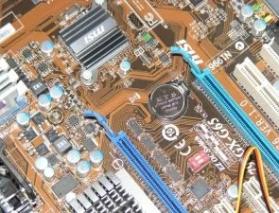This has been a season of nasty politics, concerns about our government, environmental fears, social injustice, mass shootings, terrorism, racial tensions, and violence. On social media, on talk radio, on television, and around our communities – it is not difficult to see the agony, rising tensions, fear, hate, and suffering taking place everywhere. This, from the constant onslaught of such stressful events and the persistent conditions that inspire them. People are wringing their hands as to what can be done, and it all takes its toll on each of us.
One University of California study of 1,322 people before and after 9/11 and the Iraq War found that repeated exposure to vivid traumatic images in the media lead to acute post traumatic stress responses triggering mental and physical health issues. Many of these symptoms continued as long as two to three years later[1].
Sometimes the stress can even be worse for active consumers of media than it was for those present in the actual events. In a study published by the National Academy of Sciences, the combination of TV and social media coverage of the 2013 Boston Marathon bombing was a strong trigger for acute stress – possibly posing an even greater risk of emotional harm than direct exposure[2].
These effects are being called ‘second hand PTSD’ or ‘vicarious traumatization’ by psychologists. Some followers even exhibited high PTSD even though nothing had happened to them directly.[3]
What can be done?
There are ways to address this issue. First, don’t read the above and consider yourself as now somehow ‘afflicted’. All things are impermanent, and that means they can change. You can change – ‘who you are’ is boundless.
What people have forgotten and do not recognize the immense power of, are the timeless philosophies and practices that have helped practitioners through times much darker than our own. Let’s begin with some basics. First, consciously redesigning, and then rebuilding our habits. Yes, even in our modern world this principle is still central…
Rebuilding Your Relationship with Media
The first order of business is to mindfully assess and limit our media exposure to traumatic news (perhaps even all media). The Boston Marathon study found those who spent six hours a day on media coverage that week were nine times more likely to have high acute stress levels than those who spent less than one hour on coverage each day. Believe it or not, six or more hours is not unrealistic since the advent of social media, in which many of us are constantly plugged.
Take an honest look at how often you’re seeing these kinds of posts, TV reports, radio talk, etc. Then ask yourself, “How much and how often to I really need to see this in order to be responsibly informed?” For example, we often hear about some outrageous event. No new details arise, but we then spend hours reading about the same thing from all kinds of different places, hearing different people’s opinions about it, listening to the news reporter telling us that nothing new is known about the situation yet, and so on. We dwell and dwell on it. Part of this has to do with media addiction, which is a problem in its own right. In the case of traumatic events in the news or online, it may be driven by a morbid curiosity. Or, perhaps we are driven by outrage, or an empathetic sorrow in which we wonder, “Maybe if I keep learning as much as I can, I can come up with a solution or find a way to cope?” This kind of dwelling makes us spend far more time on such media than is necessary for us to be informed, and it doesn’t get us or anyone else anywhere but stressed.
Once you’ve honestly assessed how much and how often you consume all forms of media, the next step is to make a media plan. That includes your social media, television, radio, any relevant apps, and so on. The part after that is a toughy: now you have to really begin to behave according to the plan. You will find that you almost instinctively click a button, raise your phone, hit a bookmark, etc. and before you know it, you’re back in it.
Be proactive by deciding what you’re going to do with all the free time you will have (and you will have a surprising amount). Maybe carry a journal or a book with you. When you’re in line at the store, instead of pulling out your phone and browsing the latest outrage, pull out your book. Replace one habit with another, because that blank space will cry out for being filled with your old habits.
Another longer term solution is to increase your attention, awareness of your inner thoughts, and mindfulness by building a practice of meditation. The Spiritual Naturalist Society has many resources on this to help you begin. With these increased capacities, you will be more likely to catch yourself when temptation arises. Over time, it will get easier.
It is also important to note that limiting our exposure is not about sticking our heads in the sand. A proper spiritual practice should never be about escapism. It is important that we, as responsible members of our community and world, are informed about what is happening and playing our part in making the world better – sometimes through political action, but often simply by being an example. This is why your media plan should allow you to be informed without being obsessive or unproductive.
A Perspective Shift
Limiting exposure to media is an important step, but not the whole story. Plus, some of us can’t limit – what about news reporters, writers, or even the first responders and counselors who deal with traumatic events every day? They too need a spiritual practice that can allow for a flourishing and happy life amidst the chaos.
At some point, we will need to address the fact that there are terrible things that happen in the world, and we need to find a way to, not just survive, but thrive and flourish despite that. This is where our personal philosophy and our perspectives need to begin shifting (not something achieved instantly or by mere will).
Believe it or not, there is a path toward joy in our world that doesn’t involve naively ignoring the bad; it doesn’t involve unrealistic hopes in the unlikely; it doesn’t involve nihilistic giving up; it doesn’t involve becoming an emotionless robot; and it doesn’t involve passivity in the call of action to work for change.
To find it, you need to understand this path *does* exist and, though none of us have reached its end, and though it is a long and winding path, many of us are on it and can testify to some pretty amazing transformations, experiences, and rejuvenation of our whole life experience.
Patience.
Layer 1: Proportion
One thing to consider in shifting our perspective, is a sense of proportion. We have to understand that we now live in a world where a huge amount of information is being processed, collected, filtered, and then presented to us. This information is coming from events all over the nation or globe, and from the experiences of millions or billions of people.
In traditional human societies throughout history, a human being would have only so many tragedies happen in a village to tax our empathy and occupy our concerns. But in the information age, our village has become so large that tragedies can be seen almost constantly. The world didn’t become a worse place, we are simply more aware.
A second thing to remember in the effects of our media is that this filtering process is not being done with our best interests in mind, or even with the motivation of providing us the most important or informative information about our world. The filtering is chiefly happening on the basis of salaciousness – whatever will get the most attention. Unfortunately, that happens to be deaths, violence, destruction, and so on. If someone quits their job to build a clean water source for their community, that will never get the headlines or ratings or clicks that a beheading gets.
So, what we’re left with may be a very distorted sense of what the world is really like. This is why Mr. (Fred) Rogers advised us, whenever something scary happens on the news, look for the helpers who are always there. Good people outnumber the bad, and as Dr. Martin Luther King, Jr. said, paraphrasing Unitarian minister Theodore Parker, that arc bends toward justice.
So let us not be lead into confusion by what is being broadcast 24/7 or posted the most on our social media. If we want to know the real balance of the state of the world, we should pay attention to what properly conducted studies on statistics tell us. But even if we find that some other injustice is more common, some other group more challenged, or even that some tragedy is less likely than being struck by lightning; that doesn’t mean we should turn a blind eye toward it, for even a single person’s pain is worthy of our concern and action. Nor does it mean we should belittle those who are concerned about it or be insensitive to their pain. But it should help to inform our overall sense of ‘what things are really like in our world’. Without a wise sense of proportion, we may find our emotional responses out of wack and, more importantly, we may act in ways that are well intended but less effective.
Layer 2: Cosmic Accordance
The heart of making progress toward wisdom in our practice, is in learning to bring ourselves into harmony and accord with Reality, or the cosmos, Nature, the Logos, the Tao (way), the gods, the Force, or whatever your terms. This does not mean passivity or inactivity to the call of duty, virtue, compassion, or justice. But it does mean a kind of mature inner acceptance of the way of the universe. It is making peace with the universe. This is a state of ‘unsuprise’ at the ups and downs of the world, but not in a defeatist or nihilistic way. Rather, a relationship with the cosmos whereby we expect no more or no less of it that it offers in the one reality we know.
Such a being is not thrown into turmoil by the thrashing of life’s waves. They do not dwell on regrets about what might have been. There are no ‘what ifs’ – only ‘what is’. Everything that happens, happens by natural law and causality. There is nothing that ‘should not’ have happened when judging the universe. The word “should” is understood as a value we place on our own options for the purpose of selecting our choices and actions. In the context of things not in our control, the word ‘should’ is out of place and serves no function.
We might pretend to be this kind of being for a short time, but most of us are far from it, and it would only be pointless acting (or at worst, cause us to harmfully bottle up and deny important emotions that should be faced). Having this disposition naturally and truly is not easy to achieve. But through study, diligence, and the right thought habits and practices, we can make progress down this road. And, the further we travel, the more we can begin to align ourselves with the nature of the world in which we exist.
One practice is using our honed mindfulness skills (from meditation) to stay conscious and aware of the nature of what is all around us in proportion. For example, such a person is not suddenly saddened by the site of a dead animal in the road – not because they are uncaring. It is because they are already in a state of reverence, knowing that death is a part of the cycle of life and all around them – just out of sight; the little animals in the grass and trees, the people inside the houses passing by, and further away. It was only the nature of the pavement that made visible what the wise are ever-conscious of.
With cosmic accordance comes a state of being in which we naturally respond to the world as it is – an impermanent and ever-changing tapestry. And, as such, attachment to impermanent things as though they were permanent is seen for the delusion it is. Joy, then, is not based on achieving some so-called ‘permanent’ ideal state of affairs. Joy is found in each moment, in recognition of the awe of the universe and loving interconnectedness of all living beings with ourselves.
Conclusion
So let us limit this constant onslaught of negative media in a planned way that yet allows us to be responsibly informed. Let us keep perspective of all the good so many people work for everyday.
We cannot base our happiness on reaching some imagined alternative in which all the bad people are made good or removed and all life’s problems are addressed through technology or utopia, etc. If our happiness requires some ideal state of external conditions, then we will forever be chasing it with empty hands. The same goes when it comes to our judgments about life and the world in light of what we see in the media.
This doesn’t mean refraining from action in the face of tragedies – but it does mean that the source of our action is not reactionism from shock, fear, anger, or hate. Rather, our efforts to help make the world better are driven by our aim to be a more compassionate and loving being. If this is our aim, then we cannot fail no matter what conditions come to pass. We can leave the results of our compassionate actions up to the cosmos, where they really were all along. Walking the earth maturely understanding how far we have yet to go as a people – not in despair or surrender, but in the joy that comes naturally from loving others and acting in accord with that. There can be no greater practice than this.
Subscribe to The Spiritual Naturalist Society
Learn about Membership in the Spiritual Naturalist Society
__________
The Spiritual Naturalist Society works to spread awareness of spiritual naturalism as a way of life, develop its thought and practice, and help bring together like-minded practitioners in fellowship.
__________
References:
[1] “Repeated Exposure to Media Images of Traumatic Events May Be Harmful to Mental and Physical Health”. Psychological Science: http://www.psychologicalscience.org/index.php/news/releases/repeated-exposure-to-media-images-of-traumatic-events-may-be-harmful-to-mental-and-physical-health.html[2] “Media Exposure to Traumatic Events Can Be More Stressful Than Being There”. Everyday Health: http://www.everydayhealth.com/anxiety/media-exposure-to-traumatic-events-can-be-more-stressful-than-being-there-5010.aspx[2] “Viewing violent news on social media can cause trauma”. The British Psychological Society: http://www.bps.org.uk/news/viewing-violent-news-social-media-can-cause-trauma












